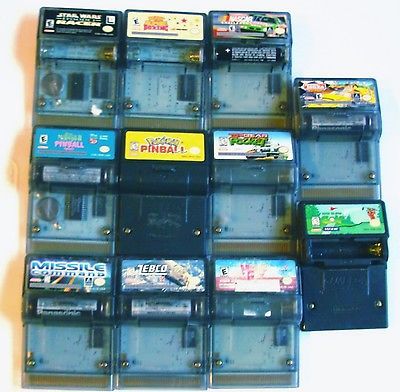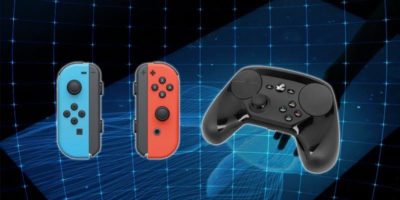Pokémon Pinball earned generally positive reviews, holding an aggregate average of 81% at GameRankings. This was a simple pinball game with Pokémon branding attached. I bring this up to state that most see this game as a passive aside in the history of the Pokémon franchise. It may well be the case, but I would like to argue that Pokémon Pinball was a technological breakthrough.
Weirdly shaped cartridges were not the norm in the ’90s. There were all kinds of GameBoy Color cartridges colors out there: green, red, blue, clear, and mostly gray. You remember the GameBoy Color Camera, with its eye-shaped camera that you could rotate for those late ’90s selfies. Well, then there was the “Rumble” cartridge, an oddly shaped cartridge that required an extra battery to make the gimmick work. These chunky games used a rumble technology, or what the industry calls haptic feedback.

Currently, nearly every modern video game system includes some form of haptic technology, but this was not always the case. The fist appearance was in Sega’s Moto-Cross arcade game. It was the first to feature “vibrotactile feedback,” enabling the player to feel the rumble of their motorcycle as it impacted with other vehicles on the screen. From there, several arcade cabinets and pinball games incorporated haptic technology. Since an increasing number of arcade games began integrating haptic feedback into their interfaces, video game consoles were jumping on the trend.
In 1997, Nintendo came out with the “Rumble Pak.” Bundled with StarFox 64, the Rumble Pak attached to the N64 controller. The importance of the Rumble Pak led to rumble becoming a gaming industry norm within a single generation. What the rumble cartridge did was to shrink the haptic technology into a more manageable form of gaming on the go.
The science behind it is actually simple. These GameBoy Color cartridges use a type of eccentric rotating mass actuator, consisting of an unbalanced weight connected to a motor shaft. As the shaft rotates, the spinning of this irregular mass causes the actuator, and in turn, the connected game system, to shake and create that distinctive “Brrrzzzzzz.” All that was needed to power the rumble feature was a single AAA battery.
This innovation sparked a massive boom in haptic technology, and each console had its own way of adapting it. In the same year as the release of the N64 Rumble Pak, the Microsoft SideWinder Force Feedback Pro was released. Many newer-generation console controllers and joysticks feature built in feedback devices too, including Sony’s “DualShock technology” and Microsoft’s “Impulse Trigger technology.”
You might ask yourself why this technology was a breakthrough. Without it, there would not be an HD Rumble in the Nintendo Switch. I mentioned before that traditional rumble uses small motors inside the controllers, while the Joy-Cons use a linear resonant actuator that is very comparable to the hardware found inside Oculus Touch controllers.

In my eyes, Pokémon Pinball and the other games that had these rumble cartridges were precursors and test cases for whether the public wanted this feature. Nintendo loves taking risks on new products. You’ve seen it time and time again. Recently it was with Nintendo Labo, using DIY cardboard kits to build pre-cut accessories for the Switch’s Joy-Con controllers, enabling new modes of play and new games.
Pokémon Pinball was a revolutionary title not for the gameplay but for what it did with haptic technology. It led the way for Nintendo and all other companies on how to incorporate these features into their systems. This sense of realism invites everyone into a new world of entertainment. These examples illustrate the premise that haptic feedback systems have evolved much faster than their visual display counterparts and are, today, delivering impressive peripheral devices that are truly usable by gamers worldwide.






Published: Jan 18, 2018 08:36 pm